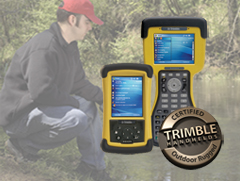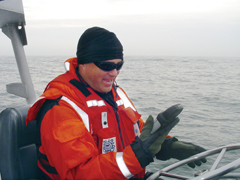

Run over something with an 80,000-lb. semi-truck, and you’d expect it to be squashed flat. And, to be honest, we would also expect the same of even our ultra-rugged handheld computers.
But recently, a Recon owned by Quintex Services fell out of a company truck onto one of the busiest streets in Winnipeg, Manitoba. Nobody knows how many cars and trucks may have run over that Recon, but one alert semi-truck driver stopped after he ran over it. He saw the Quintex label on the handheld and returned it to the company. “We really appreciate the driver who brought it back,” says Janette Finnie of Quintex. “He knew it was valuable and returned it.”
Except for some scuffs and a small crack on the touchscreen, the Recon looked no worse for wear. More importantly, it still worked. The next day, it was back on the job, and Finnie reports “it’s working great.”
Quintex delivers uniforms, linens and mats to businesses all over Winnipeg. The company has more than 30 Recons, which drivers use to capture customers’ signatures on electronic invoices when they make their deliveries. The company has been using the handhelds for about a year and chose the Recon after deciding that given their industry and Winnipeg’s harsh winter climate, a commercial-grade handheld wouldn’t be durable enough. The Recon has certainly proven that it is.
And while getting run over by a vehicle is well outside even the Recon's ruggedness specs, we're glad to see that the it has exceeded those expectations.








